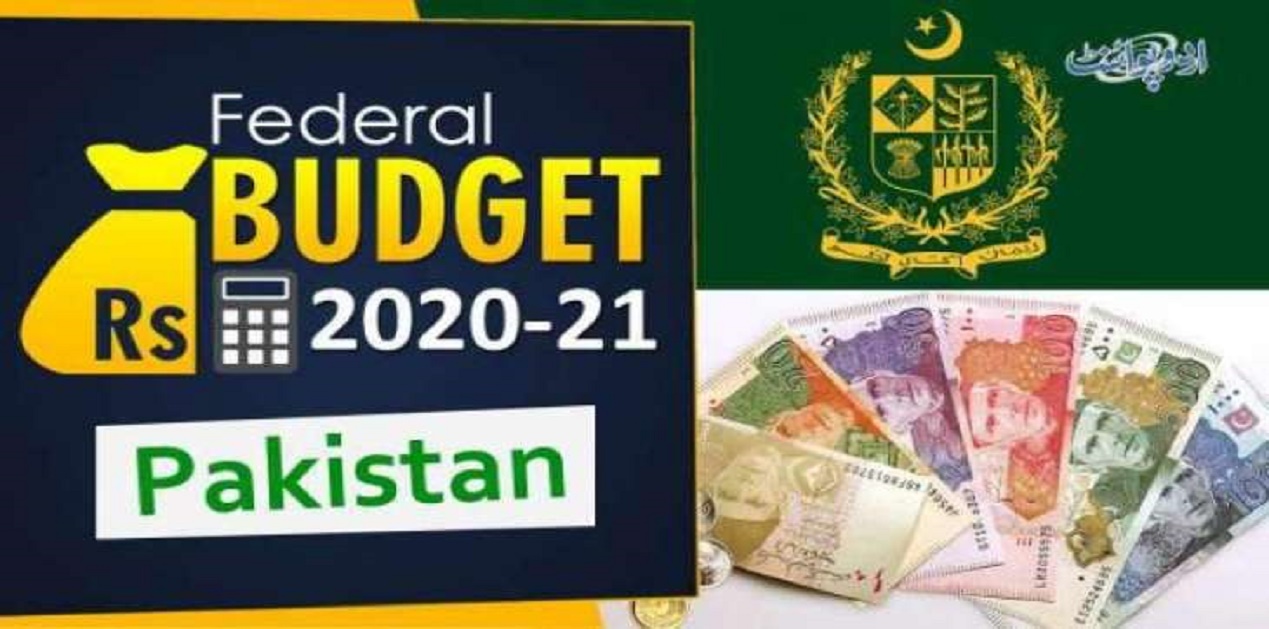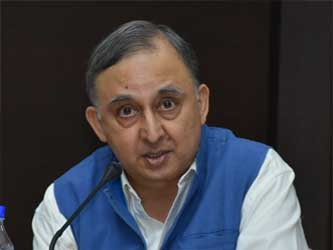The expectation from the second full-year budget presented by the Imran Khan government was out-of-the-box thinking to tackle immediate and long term issues. These included the COVID-19 pandemic, economic slowdown and mounting debt on the one hand and tackling issues of the looming water scarcity, the health infrastructure and the education emergency, on the other. Instead, the exercise seems to have taken budget-making in Pakistan to new heights of fantasy.
The key highlights of the Economic Survey for 2019-20 unveiled on 11 June and the 2020-21 budget on 12 June were: a supposedly tax-free budget with an outlay of Rs 7.14 trillion and a deficit of Rs 3,500 billion; reduction of the GDP growth rate to a negative 0.4 percent as a result of a decline in the agricultural, industrial and services sectors (The IMF had projected the growth to contract to a negative 1.5 percent while the World Bank estimated it at negative 2.5 percent)1; increase of budget deficit to 9.1 percent from 7.1 percent of GDP, reduction of revenue collection by Rs 900 billion and so on.2 That the economy was in deep distress was evident from the fact that according to the Survey, credit to the private sector fell sharply from Rs 554.7 billion last year to Rs187.3 billion this year in the July to March period signalling a marked decline and sharp deceleration underway in private sector activity. Second, working capital loans dropped from Rs 369 billion last year to Rs 28.8 billion this year in the same period.3
As earlier, the underlying theme of the budget has been to prioritize traditional military security. Thus, the Defence budget for 2020-21 is Rs1.289 trillion, or 2.82 per cent of GDP (11.8pc higher than last year’s and 17.68 per cent of the total expenditure as against 14 per cent last year). Pakistan’s defence spending as a percentage of the GDP is the highest in the region.4 However, these figures do not tell the whole story. It is a regular practice that actual defence spending year after year tends to be much higher than the original allocation. Thus, last year, the initial hike was 4.74 per cent, but it went up to 6.33 per cent by the end of the year. Second, the figures do not include pensions (Rs 369 billion– a 12.8 per cent increase over the previous year) as also major acquisitions and the nuclear programme. Including these figures would hike the defence budget significantly.5 The total number of pensioners of the Army, Navy, Air Force, and the Frontier Constabulary were at 1,656,037 in the year 2018-19.6
As against this, the federal development outlay has been set at Rs 650 billion with paltry allocations for higher education at Rs 34 billion; Rs20 billion for the health sector; Rs 70 billion for combatting the coronavirus and other disasters; Rs 70 bn for water projects. Despite the pandemic and doctors protesting the lack of protective equipment and ventilators to treat COVID-19 patients, the allocation has not been increased substantially. The virus has shown that the country’s health system is inadequate to deal with major emergencies and the urgent requirement was to have diverted more funds for the health system that has not been done.
Another looming crisis is climate change. Pakistan has been identified by German Watch as being among the top 10 countries most affected by climate change in the past 20 years owing to its geographical location.7 According to another analysis by Asian Development Bank, the socioeconomic costs of environmental degradation were considerable with climate adaptation needs ranging between $7 billion and $14 billion per year.8 As against this, the budget allocates only Rs 6 billion to counter the impact of climate change.
The government has sought to explain away the abysmal economic performance in its second year to the COVID 19 pandemic. The reality, however, is different. As an editorial in Dawn (12 June 2020) put it: the period covered by the budget data ‘includes mostly the first nine months of the fiscal year, meaning July 2019 to March 2020, much of what is portrayed cannot be attributed to the disruptions from COVID-19.’9 Equally uncomfortable for the government is its own planning ministry’s assessment that the “prospects for economic growth even before the emergence of the COVID-19 phenomenon were eclipsed by higher inflation and interest rates, negative large-scale manufacturing growth, weaker exports, sluggish resource mobilisation, uncertainty surrounding hot money inflows and, above all, tough International Monetary Fund (IMF) programme–related conditions”.10
The COVID-19 pandemic will certainly impact the future development of Pakistan. According to the Economic Survey the expected loss of employment is estimated to be between 12.5 million and 15.5 million in case of a moderate slowdown of economic activities. In case of a severe reduction, these numbers could jump up to between 18.7 million and 19.1 million.11 The Survey held that at least another 10 million people were expected to slip below the poverty line as a consequence of the pandemic and the number of people living below the poverty line ‘may rise from the existing figure of 50 million to 60m.’12 Add to this the survey’s assessment that around 57% of the country’s population was economically vulnerable to the effects of the coronavirus pandemic because of the partial and complete lockdowns imposed to stem the spread of the disease. According to the Survey, the government also expects a second wave of COVID-19 that “could further threaten macroeconomic stability and socio-economic outcomes”.13
One curious aspect of the budget is the tax figures. The original revenue target for 2019-20 was Rs 5.55 trillion. This had been reduced with the concurrence of the IMF to Rs 4.7 trillion even before the pandemic outbreak. Of this, only Rs 3.9 trillion (9.4% of GDP) could be achieved leaving a shortfall of about Rs 900 billion which was ascribed to the pandemic. The target for 2020-21 has been set at Rs 4.963 trillion (10.9% of GDP) which is 27% higher than the revised collection of Rs3.9 trillion, even though it is supposed to be a tax-free budget. 14
This is clearly an unrealistic target based on the current performance. In fact, in a post-Budget press conference the de facto Finance Minister stated “I cannot say with confidence that it [the revenue target] can be achieved”. He further advised the provinces not to make their budgets on the basis of proposed tax collection target.15 Thus, the architect of the budget was himself rubbishing the numbers just a day after the budget was presented in Parliament.
Apart from destroying the credibility of the whole budgetary exercise, his candid admission has a more ominous undercurrent. In the outgoing fiscal year, the government had projected provincial share in the federal taxes at Rs 3.254 trillion but its revised estimates showed that the provinces would receive only Rs 2.4 trillion or 26.2 per cent less. For the new fiscal year, the share of the provinces has been projected at Rs 2.87 trillion on the basis of Rs 4.963 trillion revenue target.16 But since this target is unlikely to be met, the provinces would not get their fair share sending their finances into a tailspin.
Putting things in perspective, the net federal revenues are not even enough to provide for the two major liabilities – defence Rs1.28 trillion and debt servicing Rs 2.94 trillion, equalling Rs4.22 trillion. The total revenues are estimated at Rs 6.57 trillion, including Rs 4.96 trillion tax revenue and Rs1.61 trillion non-tax revenue. Since Rs 2.87 trillion would be provincial transfers under the NFC Award, the federal revenues would be reduced to Rs3.70 trillion.17 Moreover, this estimate too is subject to the tax targets being met.
A final issue is of Pakistan’s public debt and liabilities (domestic and external). They had touched a massive Rs 35.207 trillion by end March 2020. This showed a two-and-a-half-times increase since 2013 when it was recorded at Rs14.29 trillion. The total public debt constitutes 84.38 percent of GDP that at present is Rs 41.72 trillion.18 This violates the Fiscal Responsibility and Debt Limitation Act, which prescribes limiting debt to GDP ratio below 60 percent. To put things in perspective, each Pakistani is indebted to the tune of Rs166,723 which is several times more than the per capita expenditure on health and children’s education.19
Clearly, the entire budget-making exercise is an effort to keep the IMF programme in play by setting unachievable high revenue targets in the new financial year just as they were unachievable in the previous one. There is desperation in Pakistan to remain in the IMF programme. Without this, it will not be able to obtain funding from other multilateral financial institutions like the World Bank and ADB. The underlying problem that Pakistan faces is that due to debt servicing and a massive defence outlay it just does not have enough revenues to meet its administrative and development needs for which it has to borrow heavily. This will continue till the leadership does not prioritise non-traditional security that includes water, education, health, environment and climate change. The two full budgets presented by the PTI government so far signal that radical change in economic policy are not on the cards. Without undertaking serious changes in how the civil and especially military leadership view security, structural challenges will remain unaddressed. Thus, Pakistan will continue to be a drag on the international financial system.
Tilak Devasher is the author of three acclaimed books on Pakistan. He is a former Special Secretary, Cabinet Secretariat, Government of India and is currently Member, National Security Advisory Board and Consultant, Vivekananda International Foundation.
Endnotes :
- Imran ali Kundi.‘All economic targets missed’, The Nation, 12 June 2020, https://nation.com.pk/12-Jun-2020/all-economic-targets-missed
- ‘No new tax in budget’, Daily Times, 13 June 2020, https://dailytimes.com.pk/625940/no-new-tax-in-budget/
- ‘Economy in distress’, Edit in Dawn, 12 June 2020, https://www.dawn.com/news/1562989/economy-in-distress
- Baqir Sajjad Syed,‘Govt proposes Rs1.29tr for defence spending’, Dawn, 13 June 2020, https://www.dawn.com/news/1563187/govt-proposes-rs129tr-for-defence-spending
- Ibid
- Rizwan Shehzad, ‘Govt employees, pensioners 'left high and dry', The Express Tribune, 13 June 2020, https://tribune.com.pk/story/2241456/1-govt-employees-pensioners-left-high-dry/
- ‘Economic Survey depicts dismal picture of climate change impacts’, Dawn, 12 June 2020, https://www.dawn.com/news/1562877/economic-survey-depicts-dismal-picture-of-climate-change-impact
- Ibid
- ‘Economy in distress’, Edit in Dawn, 12 June 2020, https://www.dawn.com/news/1562989/economy-in-distress
- Shahbaz Rana, ‘Over 57% to suffer Covid financial squeeze’, The Express Tribune, 12 June 2020
- Ibid.
- Iftikhar A. Khan, ‘Another 10m likely to slip below poverty line’ Dawn,12 June 2020, https://www.dawn.com/news/1562982/another-10m-likely-to-slip-below-poverty-line
- ‘Over 57% to suffer Covid financial squeeze’, Shahbaz Rana.
- Shahbaz Rana,‘Govt imposes Rs200b worth of additional taxes’,The Express Tribune, 13 June 2020, https://tribune.com.pk/story/2241594/2-govt-imposes-rs200b-worth-additional-taxes/
- ‘Post-budget embarrassments’, edit in Daily Times, 15 June 2020, https://dailytimes.com.pk/626801/post-budget-embarrassments/
- ‘A rolling budget?’ EditThe Express Tribune, 13 June 2020. https://tribune.com.pk/story/2241455/6-a-rolling-budget/
- Israr Khan, ‘Govt to cough up Rs2.9tr on debt payments next year’, The News, 13 June 2020, https://www.thenews.com.pk/print/672108-govt-to-cough-up-rs2-9tr-on-debt-payments-next-year
- Ibid
- ‘Interest payments to swallow Rs2.9tr, The Express Tribune, 13 June 2020. https://tribune.com.pk/story/2241587/2-interest-payments-swallow-rs2-9tr/
https://tribune.com.pk/story/2240941/57-suffer-covid-financial-squeeze/
(The paper is the author’s individual scholastic articulation. The author certifies that the article/paper is original in content, unpublished and it has not been submitted for publication/web upload elsewhere, and that the facts and figures quoted are duly referenced, as needed, and are believed to be correct). (The paper does not necessarily represent the organisational stance... More >>
Image Source: https://photo-cdn.urdupoint.com/media/2020/06/_3/730x425/pic_1591968613.jpg











Post new comment